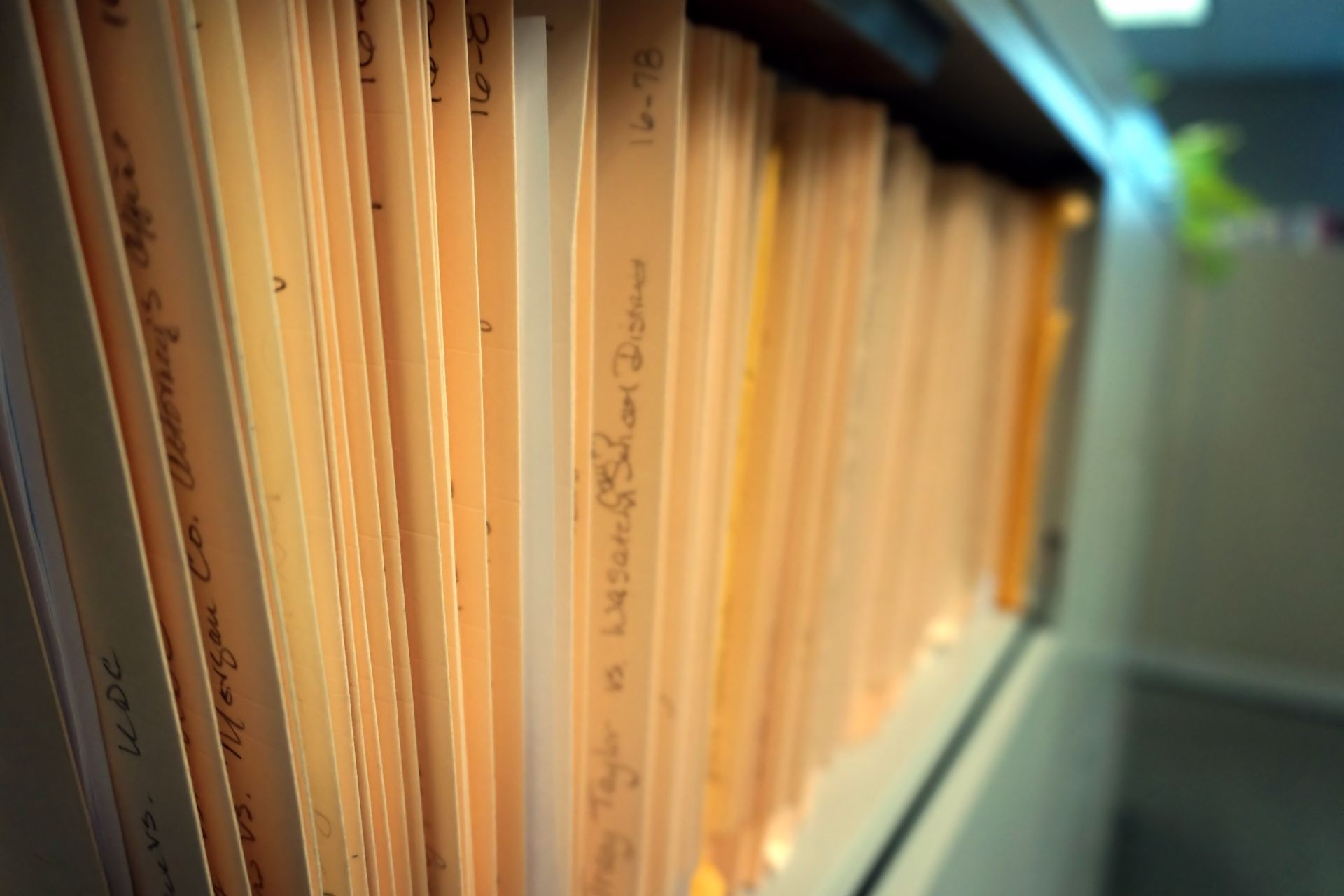Files Management Techniques
Records should be managed at each stage of their lifecycle, from the time they are created to when they cease to hold any administrative, legal, or fiscal value.
Creation
Know which copy is your "record copy" and minimize duplicates. Use centralized filing systems if necessary. Duplicates may seem innocent, and they are handy, but they also pile up, costing organizations much in terms of space, filing equipment, and sometimes litigation costs if the original record was (and all copies should have been) destroyed according to an approved retention schedule.
Active Use
Records in active use need to be found quickly. They receive frequent handling, and so should be housed in such a way that would minimize damage. They are often used by many people and need to be tracked as to who has what and for how long.
- A properly-managed file drawer will use no more than 23 to 24 inches of the 27 inches of clear capacity (if using traditional upright file drawers). Tightly packed drawers slow filing and retrieval, cause personnel to suffer paper cuts, and result in records which are torn or destroyed.
- Active file drawers should have between 5 to 20 file guides (based on the classification scheme, e.g. A-F, or 1000-3999). Anything less probably means that personnel are spending too much time "fingering" through the drawers.
- File folders should all have the same basic tab style, not a mixture of different types and sizes. The folders should be durable, at least 11-point for frequent use out of the file and 14-point passboard for heavy use.
- Standard folder labels should be used, and they should be typed rather than handwritten.
- Manila folders are designed to hold a maximum of 3/4" of paper. Over-filling folders causes the material to ride up in the folder and obscure the label. It also subjects the material to ripping and tearing and tends to cause the folders to "slump" in the drawer. On the other hand, if files only contain a few items, there may be too many discrete files and consolidation may be advisable. An optimum folder should contain from 20-50 pages.
- Hanging file folders should only be used in conjunction with manila folders, not with papers stuffed into the hanging file alone. This will facilitate later removal of the records when they go into inactive storage.
- Filing systems should only be used for storing files. Books, office supplies, and lunch should not be stored in filing cabinets.
- Centralize the filing of common interest records to one location under one supervisor. File specialized records in departments where handled and establish handling procedures.
- The use of microfilm or imaging systems will reduce the need for space, mitigate damage through handling, as well as facilitate the search for records.
- Remove files from active file space when they are used less than once per month, otherwise your inactive files will clog your active file space and make finding your active files take twice as long.
Inactive Use
Records removed from active file space should be stored outside of the immediate office area, either in an agency storage room or at an offsite records center, until their retention has been met. The State Records Center is available for use by Utah governmental entities free of charge. The reason for using off-site storage is primarily cost. Office space is expensive, but warehouse space is relatively inexpensive, and if the records are not needed frequently, use of a records center is a good solution. Records may be retrieved from the State Records Center if needed, the turnaround time being about 24 hours.
- The more organized your records are in their active use stage, the easier they will be to find when stored off-site. Always use the same filing scheme in inactive storage as you did in the active file drawer.
- Remove files from file drawers and hanging file folders and place them in a Records Center box (with the Archives' label on it), even if they will not be transferred to us. This type of box is built to strong specifications and is usually less expensive than other boxes and easier to handle. Do not use banker's boxes.
- If creating your own storage area, be sure the floors have sufficient strength (300 psi).
- Use the ground floor if possible, not a basement, which may be prone to water damage.
- Be sure that your storage area is secure against any unauthorized access.
- Storage areas should be climate-controlled. Do not let the temperature exceed 82 degrees. Make sure it has a good ventilation system.
- Use standard steel shelving. Do not place records directly on the floor, in case of flooding.
Disposition
Records whose retention has been met should be destroyed. Records that are stored at the State Records Center are shred when the retention period has been met and notification has been sent to the agency. Records which have continuing historical value should usually be transferred to the State Archives.
- Shredding records may be done to destroy them, but the shred size should be no larger than 3/16". Shredding is very labor intensive and is not practical for large volumes of records.
- You may make your own arrangements for burning your records, which can be done at the Davis County Solid Waste Management and Energy Recovery Special Service District.

Page Last Updated February 7, 2017 .
